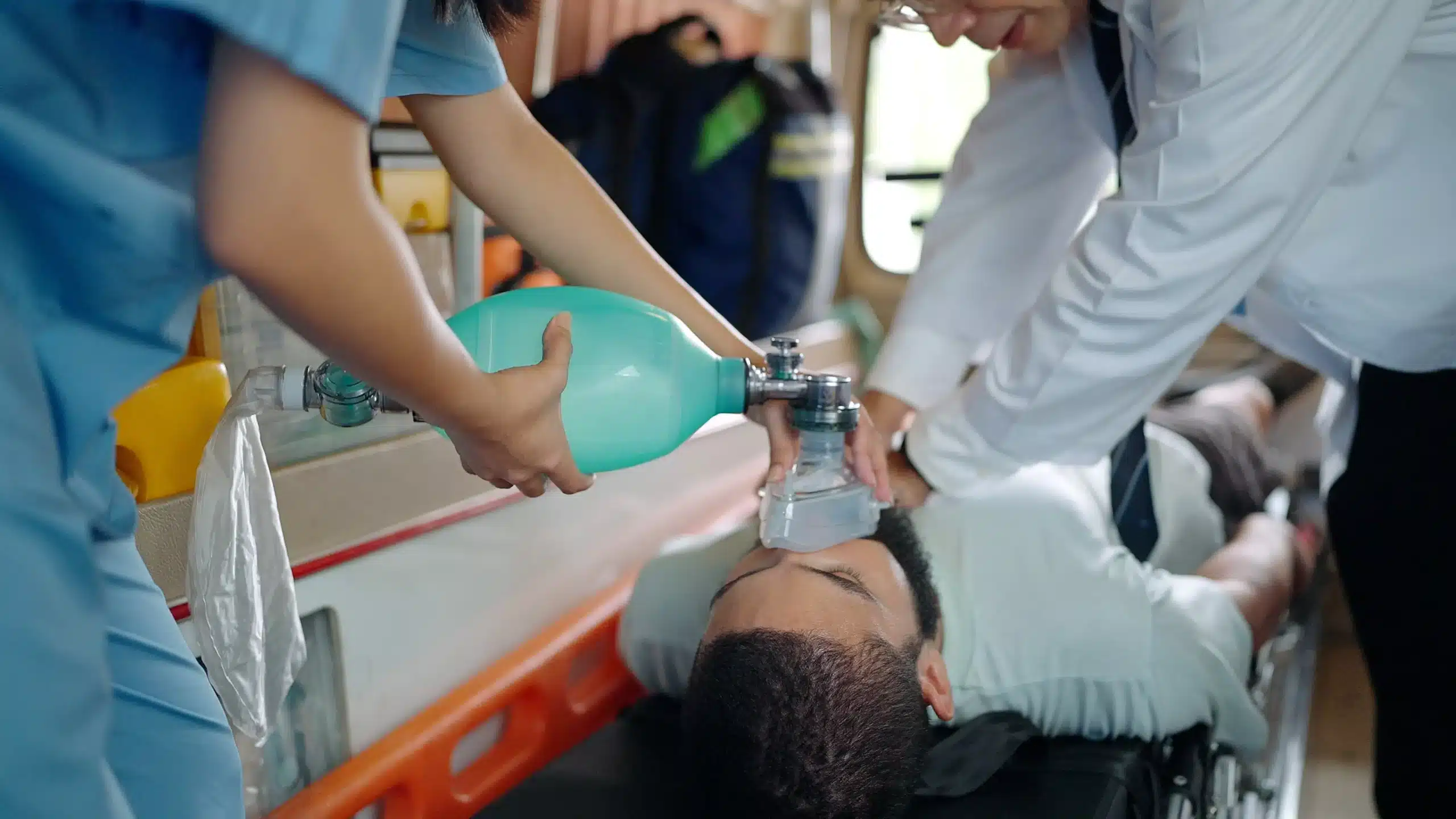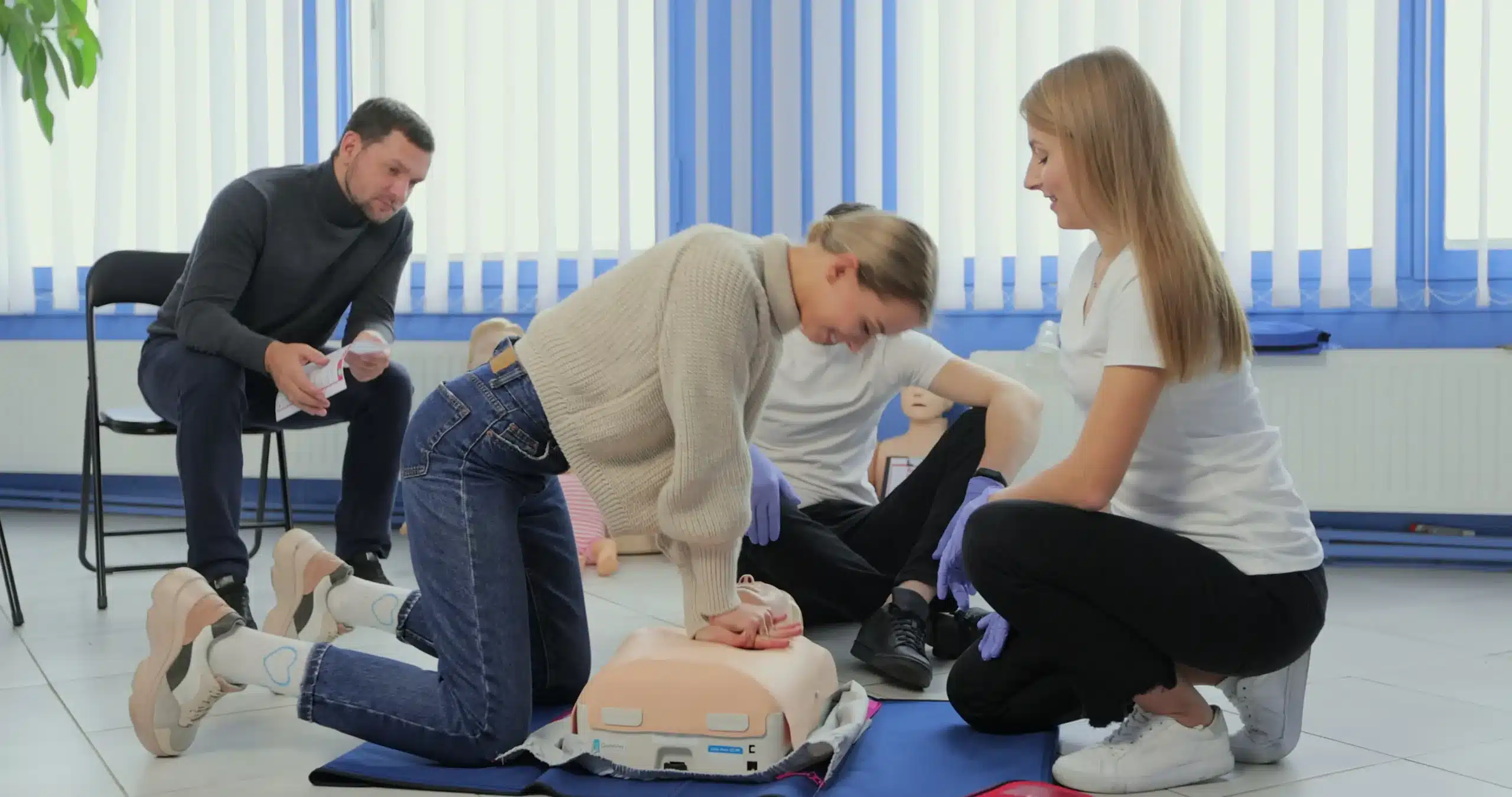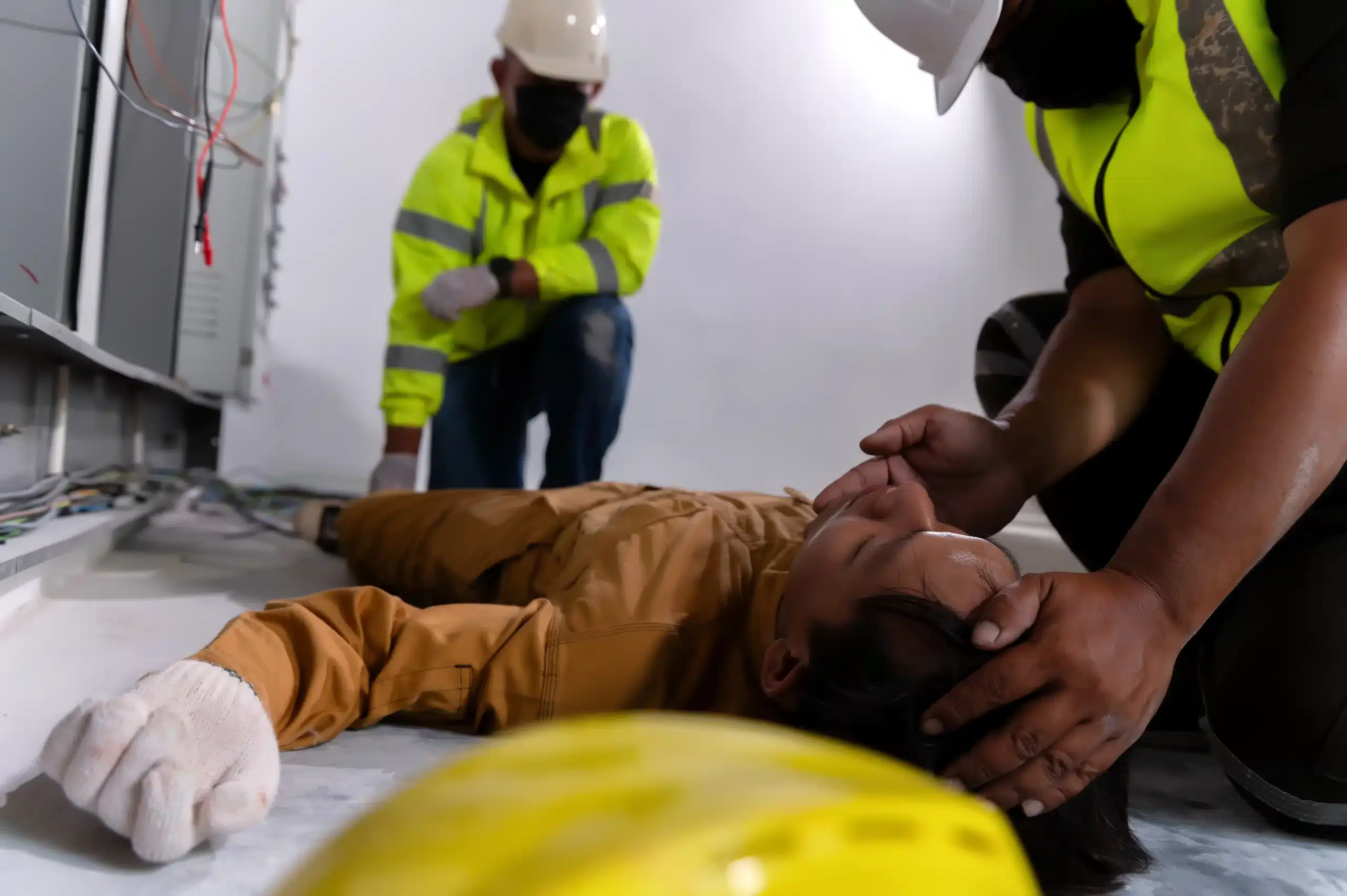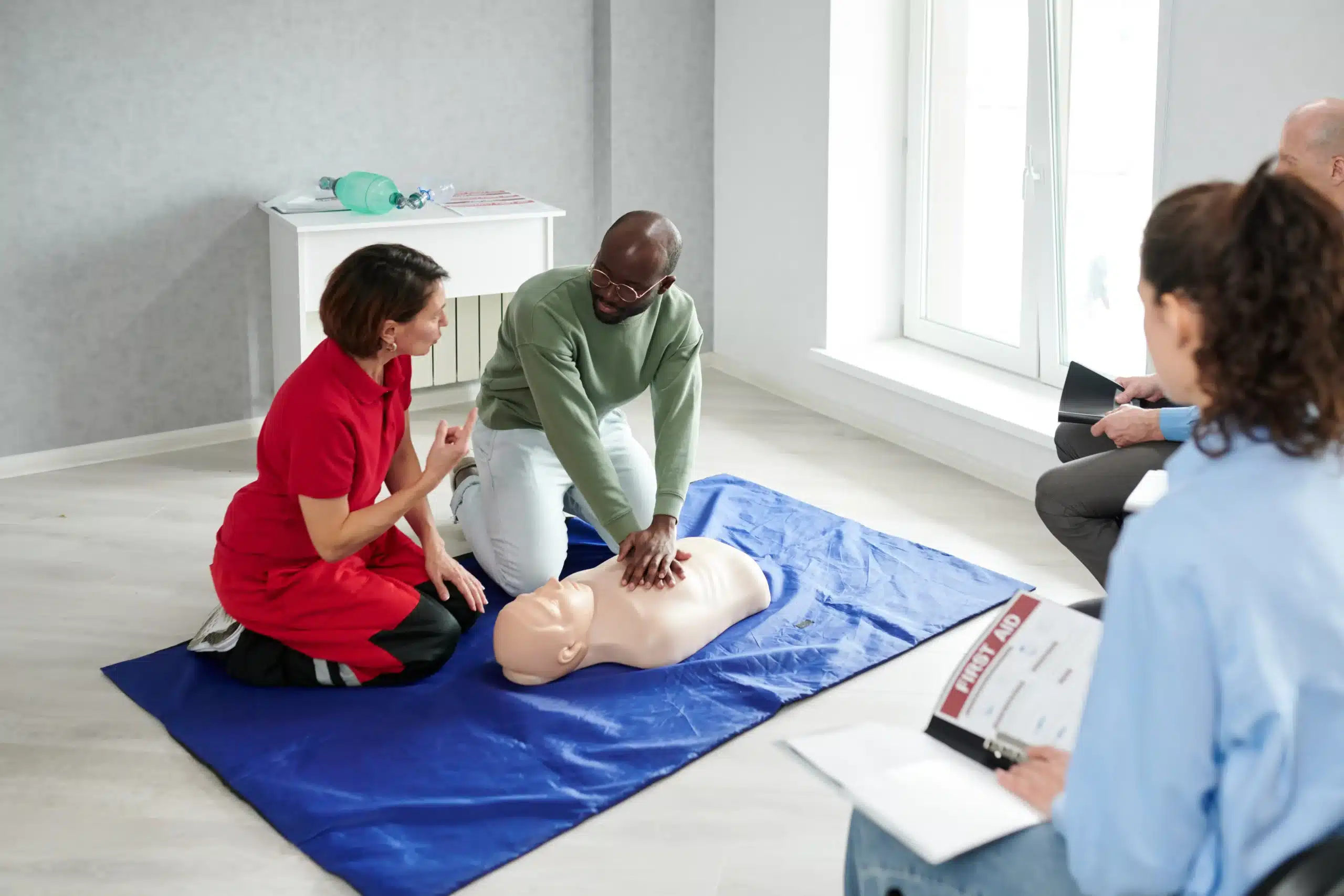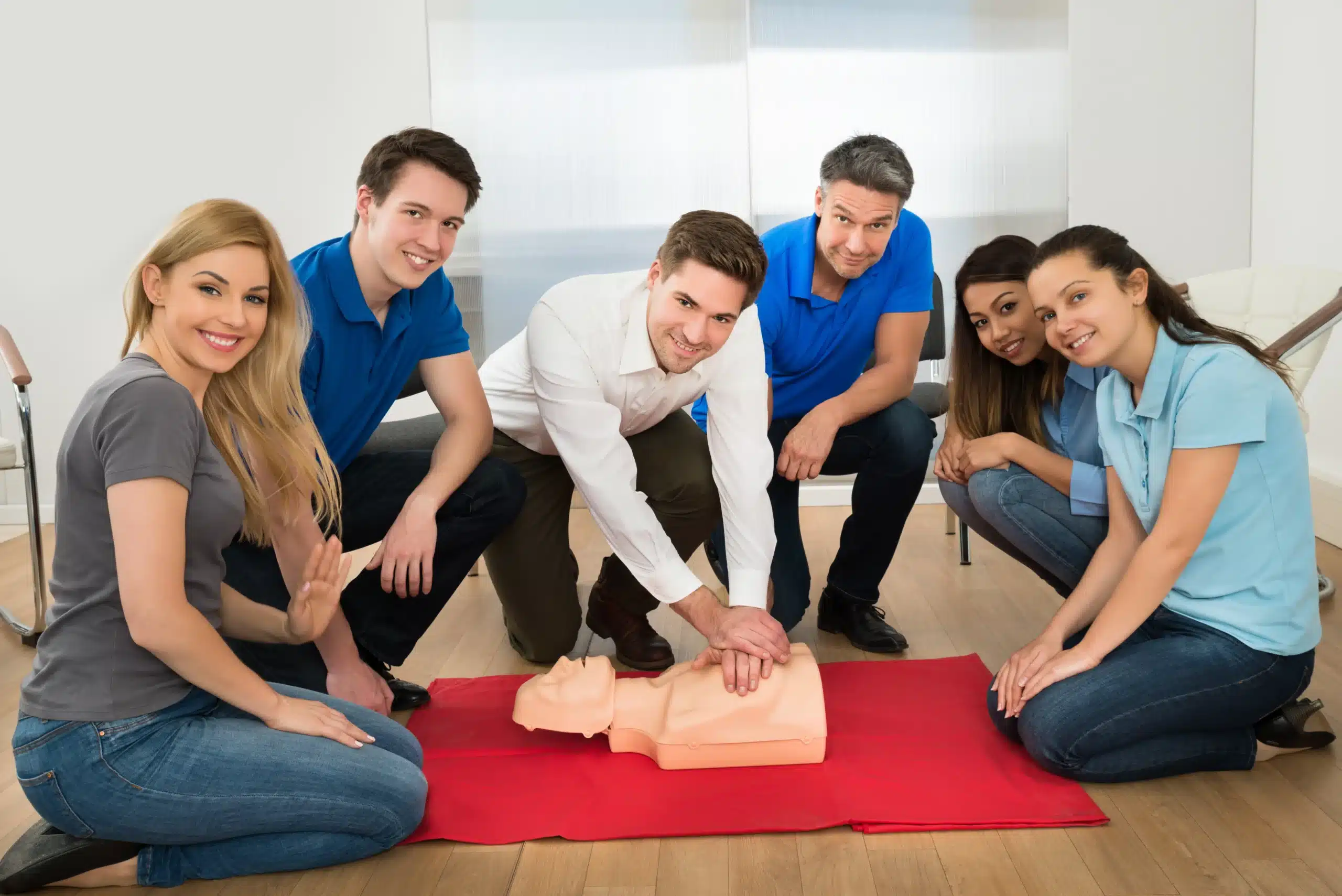Knowing CPR can transform you from a bystander to a potential lifesaver. This comprehensive guide will demystify CPR certification, providing you with a clear understanding of the process, benefits, and available options. We’ll explore the different types of CPR courses, where to find “CPR certification near me,” and how to choose the right training provider. We’ll also discuss the costs and duration of certification, as well as debunk common myths. Whether you’re a healthcare provider, a teacher, a parent, or simply someone who wants to make a difference, this guide will empower you to take the next step towards becoming CPR certified.
Key Takeaways
- CPR certification empowers you to save lives: Equipping you with essential skills and confidence, it allows you to respond effectively during emergencies. Explore different learning formats—in-person, online, or blended—to find the best fit for your lifestyle.
- Select the right CPR course for your needs: Consider accreditation, instructor experience, and course content when choosing a provider. Reputable organizations like the AHA or Red Cross offer standardized training. Inquire about discounts and explore various learning formats.
- CPR certification enhances your personal and professional life: Beyond the ability to assist in emergencies, this valuable skill demonstrates your commitment to safety and can boost your career prospects. Maintain your certification to stay current with the latest guidelines.
What is CPR Certification?
CPR certification formally recognizes that you’ve completed training in cardiopulmonary resuscitation (CPR). These techniques are crucial for responding to cardiac emergencies. The training typically covers how to perform CPR, including chest compressions and rescue breaths, for someone experiencing cardiac arrest. Getting CPR certified equips you with the knowledge and confidence to act effectively in medical emergencies—potentially making the difference between life and death. Organizations like the American Heart Association (AHA) and the American Red Cross offer various CPR training programs to teach these life-saving skills. CPR certification isn’t just about learning the mechanics; it’s about understanding how to assess a situation and respond quickly and efficiently under pressure.
Why Get CPR Certified?
Getting CPR certified is more than just checking a box; it’s about equipping yourself with the skills and confidence to potentially save a life. Think of it as a fundamental life skill, much like knowing how to swim or change a tire. It empowers you to respond effectively during emergencies and make a real difference. CPR certification teaches you the skills to respond to cardiac arrest and other medical emergencies.
One of the most significant benefits of CPR certification is the increased confidence it provides. Knowing you can step in during a crisis, whether it involves a loved one, a stranger, or a colleague, can significantly impact the outcome. This confidence translates into quicker action and a higher chance of survival for someone experiencing a medical emergency. CPR Classes Oakland provides the training you need to feel prepared in these critical situations. For larger groups, we offer discounts , making it easier for your team to get certified.
Beyond personal empowerment, CPR certification has practical implications for various careers. Many professions, from healthcare and childcare to education and fitness, require or strongly encourage this important skill. Having this qualification on your resume can make you a more competitive candidate and demonstrate your commitment to safety. Explore our courses to see how CPR certification can enhance your career. Our low price guarantee ensures you receive high-quality, affordable training. We also offer other certifications like ACLS and NRP. We believe everyone should have access to these life-saving skills.
Types of CPR Certification Courses
CPR certification courses cover a range of techniques and situations, ensuring you’re prepared for various emergencies. Here’s a breakdown of common CPR certifications:
Adult CPR
Adult CPR is the foundation of most certification courses. You’ll learn how to recognize cardiac arrest, perform chest compressions and rescue breaths, and clear airways. These skills are crucial for responding to emergencies involving adults. Many providers, like the American Red Cross, offer adult CPR training combined with AED training. Safety Training Seminars offers the American Heart Association BLS certification, which covers adult CPR and other life-saving techniques.
Child CPR
Child CPR focuses on the specific needs of children aged one to puberty. While similar to adult CPR, child CPR techniques adjust for smaller bodies and airways. You’ll learn modified compression rates and depths, as well as how to handle choking incidents in children. Child CPR training often includes infant CPR instruction as well.
Infant CPR
Infant CPR addresses the delicate needs of babies under one year old. This training covers gentle chest compressions, back blows, and checking for an object if the infant is choking. You’ll gain confidence in responding to emergencies involving infants, a valuable skill for parents, caregivers, and healthcare professionals. Infant CPR is typically taught alongside child CPR. Consider exploring the American Academy of Pediatrics NRP certification for advanced training in neonatal resuscitation.
AED Training
AED (Automated External Defibrillator) training teaches you how to use an AED safely and effectively. You’ll learn how to assess a situation, apply AED pads, and follow the device’s prompts. AEDs are essential tools in cardiac arrest situations, and this training empowers you to provide immediate assistance while waiting for professional medical help. CPR/AED classes are often bundled together.
First Aid
First aid certification equips you to handle a wide range of non-life-threatening medical situations. You’ll learn how to treat minor injuries like cuts, burns, and sprains, as well as manage more serious issues like allergic reactions and fractures. First aid training provides practical skills for everyday emergencies and complements CPR certification. Check with your local American Red Cross chapter for first aid and CPR combination courses. Safety Training Seminars also offers group discounts on these essential certifications.
Find CPR Certification Near You
Finding the right CPR class can feel overwhelming, but it doesn’t have to be. Several reputable organizations and institutions offer training, each with its own advantages. Let’s explore some of your options to help you find the perfect fit.
Safety Training Seminars
Companies like Safety Training Seminars specialize in providing a range of certification courses, often with convenient locations and competitive pricing. They frequently offer group discounts and cater to specific community needs. If you value personalized, hands-on learning, a dedicated training center like this might be a great choice. Plus, if you’re in Oakland, Alameda, or Berkeley, you can easily find CPR classes near you. CPR certification equips you with the skills to respond effectively during emergencies, and as Alameda CPR Classes points out, it gives you the “knowledge and confidence to act.”
American Heart Association (AHA)
The American Heart Association (AHA) is a recognized authority on CPR and offers a standardized, widely accepted curriculum. While the cost of AHA training varies, it’s known for its comprehensive approach. If you’re looking for a credential with strong recognition, especially in healthcare, an AHA-certified course is a solid option. As My CPR Certification Online notes, “AHA training costs can vary.”
American Red Cross
The American Red Cross is another trusted source for CPR training, with courses similar to the AHA. They also offer various other safety and preparedness programs. The Red Cross often has multiple training locations and flexible scheduling. Like AHA courses, Red Cross training costs can fluctuate, generally falling “between $70 and $150, depending on specifics.”
Local Community Colleges
Your local community college can be a cost-effective way to get CPR certified. These courses are often taught by experienced instructors and provide structure. Community colleges sometimes offer additional support, such as “remediation sessions,” to help students.
Online Providers
Online CPR certification offers flexibility, allowing you to learn at your own pace. However, choose a reputable online provider that meets your employer’s or licensing board’s requirements. While convenient, “many employers and organizations prefer or require in-person training,” so double-check before you sign up.
Choose the Right CPR Provider
Finding the right CPR class is an important decision. Here’s what to consider when evaluating different CPR providers:
Accreditation and Reputation
Look for training centers accredited by nationally recognized organizations like the American Heart Association (AHA) or the American Red Cross. CPR Classes Oakland offers a range of AHA-certified courses, including BLS, ACLS, and NRP certifications. Accreditation ensures the program meets established standards. It’s also a good idea to research the provider’s reputation.
Instructor Qualifications
Experienced, certified instructors make a big difference in your learning. They can offer personalized guidance and answer your questions effectively. Inquire about the instructors’ backgrounds and certifications to ensure they have the necessary expertise.
Course Materials and Format
CPR training programs use various materials and formats. Some providers offer online courses, while others focus on in-person training. Consider which learning style suits you best. Many employers and organizations prefer in-person CPR training, so check their requirements before enrolling in an online course. CPR Classes Oakland offers group discounts for in-person training, making it a cost-effective option for teams.
Cost and Value
CPR course costs vary. While it’s tempting to choose the cheapest option, focus on value. A low price doesn’t always mean quality training. Compare prices, but also consider the course content, materials, and instructor qualifications. CPR Classes Oakland offers a low-price guarantee, ensuring you receive high-quality training at a competitive price.
Reviews and Testimonials
Reading reviews and testimonials from past students can give you valuable insights into a CPR training provider. Look for comments about the quality of instruction, course materials, and overall experience. Positive reviews often indicate a reputable provider committed to student success.
In-Person vs. Online CPR: Which is Right for You?
Choosing the right CPR class format depends on your learning style, schedule, and career goals. Let’s weigh the pros and cons of in-person, online, and blended learning CPR training to help you make the best decision.
Pros and Cons of In-Person Training
In-person CPR training provides hands-on learning with a certified instructor. This approach is ideal for those who value real-time feedback and learn best by doing. You’ll practice techniques on mannequins and receive personalized guidance, ensuring you’re fully prepared to respond in a real emergency. In-person classes also offer the opportunity to ask questions and interact with other students, creating a supportive learning environment. This direct interaction with an instructor can be invaluable for building confidence and mastering essential skills.
However, in-person classes require a greater time commitment, as you’ll need to travel to a specific location and attend scheduled sessions. This can be challenging for individuals with busy schedules or limited transportation options. Consider the location and schedule of in-person classes when making your decision. Safety Training Seminars offers CPR certification courses in Oakland and over 60 other cities, making it easier to find a convenient location.
Pros and Cons of Online Training
Online CPR training offers unparalleled flexibility, allowing you to learn at your own pace and on your own schedule. You can access course materials and videos anytime, anywhere, making it a convenient option for those juggling multiple commitments. This format can be particularly appealing for those who prefer self-directed learning or have limited availability for in-person classes.
However, online CPR certifications may not meet all requirements for certain professions, particularly in healthcare. Many employers prefer or require in-person training because of the emphasis on hands-on skills development. While online courses may offer some simulations, they lack the real-time feedback and interaction of in-person training. Always verify whether online certification is acceptable for your specific professional needs.
Blended Learning Options
Blended learning combines the flexibility of online learning with the practical experience of in-person skills sessions. You can complete the online coursework at your convenience and then attend a shorter, in-person session to practice your skills and receive instructor feedback. This format can be a great option for those who want a more comprehensive learning experience but need more flexibility than a traditional in-person class. Blended learning offers a balance between convenience and hands-on practice.
Before enrolling in a blended learning course, confirm whether this format meets the requirements of your workplace or licensing board. Ensure the program includes adequate in-person training to satisfy any necessary certifications. Safety Training Seminars offers a variety of CPR courses, so you can explore different learning formats to find the best fit.
What to Expect During CPR Training
CPR training blends classroom learning with hands-on practice, so you’ll learn the techniques and then build your skills. Here’s what you can expect:
Classroom Instruction
Your instructor will cover essential topics like recognizing the signs of a heart attack, assessing a victim, and performing CPR correctly. They’ll also explain how to use an automated external defibrillator (AED) and provide first aid for common emergencies like choking. Choosing the right CPR training company involves considering factors like accreditation, instructor qualifications, and course content. At Safety Training Seminars, our instructors are experienced healthcare professionals dedicated to providing high-quality instruction.
Hands-On Practice
After the classroom portion, you’ll practice on manikins. This hands-on training lets you experience real-life scenarios and build confidence. You’ll learn the correct hand placement, depth of compressions, and rescue breathing techniques. Studies show that hands-on practice with manikins is highly effective for learning and mastering CPR. At Safety Training Seminars, we emphasize hands-on training to ensure you’re fully prepared for an emergency.
Assessment and Certification
Once you’ve completed the training, you’ll receive a CPR certification. This usually involves a written exam and a skills test where you demonstrate your CPR technique on a manikin. Many training providers offer remediation sessions to help you improve your skills if needed. At Safety Training Seminars, we want you to succeed, and we’re here to support you every step of the way.
Overcome Common Challenges
Some people feel anxious about performing CPR or worry they won’t remember the steps. It’s normal to feel this way. Our instructors create a supportive learning environment where you can ask questions and practice until you feel comfortable. Incentives like professional development credits can motivate participants, and experiential learning models can enhance the learning experience. At Safety Training Seminars, we understand these challenges and provide the resources and support you need to succeed.
CPR Certification: Cost and Duration
Getting CPR certified is a manageable investment of both time and money. Let’s break down the typical costs and how long you can expect the process to take.
Average Pricing and Course Length
CPR certification costs vary depending on where you live and the specific course. Basic CPR and AED training typically costs somewhere between $40 and $100. More specialized certifications, like ACLS or PALS, might be a bit more expensive. Most basic CPR courses can be completed in a single day, usually lasting between four and six hours. For specific pricing and schedules, check with your chosen provider, like Safety Training Seminars. They offer a low price guarantee and frequently have discounts for group classes, making it an affordable option.
Discounts and Group Rates
Many CPR training providers offer discounts for groups, companies, or organizations. If you’re certifying a team or a group of colleagues, ask about group rates. Some providers also offer discounts for students, seniors, or members of specific organizations. Always inquire about potential discounts when you register. Safety Training Seminars offers discounts for group bookings, making it a cost-effective choice for workplaces or community groups.
Financial Aid Options
While less common for basic CPR certification, some organizations might offer financial assistance or payment plans for those who qualify. This is more frequently available for advanced certifications or for people pursuing healthcare careers. Check with your chosen training center to see if they have any financial aid options.
Certification Renewal
CPR certifications are usually valid for two years. To maintain your skills and knowledge of the latest guidelines, you’ll need to renew your certification before it expires. Renewal courses are often shorter and cheaper than the initial certification course. Set a reminder so your certification stays current and you’re always ready to help in an emergency. You can find more information on specific certifications like BLS and NRP on the Safety Training Seminars website.
Debunking CPR Certification Myths
It’s easy to get confused by conflicting information about CPR certifications. Let’s clear up some common misconceptions so you can make informed decisions about your training.
The Truth About Online Certifications
While convenient, online-only CPR certifications might not meet requirements for many healthcare jobs. State regulations often mandate in-person training, regardless of any online component. Even in other fields, some employers may not accept online-only certifications. Always check specific requirements before enrolling in an online course. If you’re in the Oakland area, consider our in-person CPR classes.
The Importance of Hands-On Practice
CPR is a physical skill. Effective CPR requires hands-on practice with feedback from a qualified instructor—something online-only courses can’t offer. Blended learning programs that combine online coursework with in-person skills sessions are a good alternative. Our BLS certification course at Safety Training Seminars includes this essential hands-on training.
Understanding Certification Expiration
CPR certifications typically expire every two years. This ensures your skills and knowledge are up-to-date with the latest guidelines. Renewal courses are readily available and often shorter than the initial certification course. Check with your certifying organization, such as the American Heart Association, for specific renewal requirements.
Recognizing Course Differences
Not all CPR courses are created equal. When choosing a training provider, consider factors like accreditation, instructor qualifications, and course content. Look for providers affiliated with reputable organizations like the American Heart Association. Check out our low price guarantee at Safety Training Seminars. We offer high-quality, affordable courses taught by experienced instructors.
Who Needs CPR Certification?
While it’s a common misconception that everyone needs to be certified to perform CPR, training provides the confidence and skills to act effectively in an emergency. Even if your job doesn’t require it, learning CPR can empower you to save a life. Consider our group discounts if you’re interested in training with friends, family, or colleagues.
How CPR Certification Impacts Your Life and Career
CPR certification equips you with life-saving skills and the confidence to act in medical emergencies. It’s more than just a skill; it’s the confidence to potentially make a difference between life and death. Knowing you can assist loved ones, strangers, or colleagues during emergencies brings a sense of empowerment. This increased confidence can significantly improve the outcome in these critical situations. As the saying goes, “Seconds save lives,” and CPR and First Aid training empowers you to use those seconds effectively. You can find more information on the benefits of CPR certification from Alameda CPR Classes.
Beyond personal preparedness, CPR certification can open doors professionally. Many employers, particularly in healthcare, education, and emergency services, prefer or require CPR-certified candidates. It demonstrates your preparedness and commitment to safety, making you a stronger applicant. For educators and childcare providers, CPR training is essential for creating a safe learning environment. Choosing a program with experienced instructors, like those at Safety Training Seminars, provides real-world insights and practical tips beyond the basics. Quest Safety Training highlights the value of experienced instructors who offer more than just textbook knowledge. Whether pursuing a healthcare career or preparing for any situation, CPR certification is a valuable investment.
Related Articles
- Your Guide to Pediatric CPR Certification – Oakland CPR Classes
- CPR Certification in Oakland: Your Guide – Oakland CPR Classes
- Pediatric First Aid & CPR: Your Ultimate Guide – Oakland CPR Classes
- CPR Myths Exposed: Truth Behind Common Misconceptions
- Why CPR is Crucial in Healthcare
Frequently Asked Questions
How do I choose the right CPR certification course? Consider your specific needs and career goals. If you’re pursuing a healthcare career, look for certifications from reputable organizations like the American Heart Association (AHA) or the American Red Cross. If you need flexibility, explore blended learning options that combine online coursework with in-person skills sessions. Also, consider the location, schedule, and cost of the course. Don’t hesitate to contact the training provider to discuss your needs and ask questions.
What’s the difference between CPR and First Aid certification? CPR focuses specifically on life-saving techniques for cardiac arrest and breathing emergencies. First Aid covers a broader range of medical situations, from minor injuries like cuts and burns to more serious issues like allergic reactions and fractures. Both certifications are valuable, and many providers offer combined CPR and First Aid courses.
Is online CPR certification accepted everywhere? While online CPR certification offers flexibility, it’s essential to check whether your employer or licensing board accepts it. Many healthcare professions require in-person training due to the hands-on nature of CPR. Always verify the specific requirements before enrolling in an online course.
How long does CPR certification last, and how do I renew it? CPR certifications are typically valid for two years. Renewal courses are usually shorter than the initial certification and cover the latest guidelines. Contact your certifying organization or training provider for information on renewing your certification. It’s a good idea to set a reminder to ensure your certification remains current.
I’m nervous about performing CPR. What if I freeze in a real emergency? It’s completely normal to feel apprehensive about performing CPR. Reputable training programs emphasize hands-on practice and create a supportive learning environment. Experienced instructors will guide you through the steps and address your concerns, helping you build the confidence to act effectively in a real-life situation.


